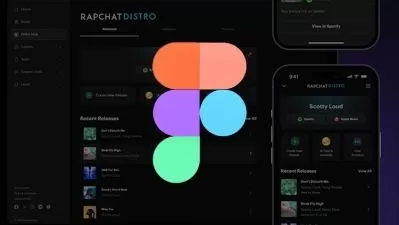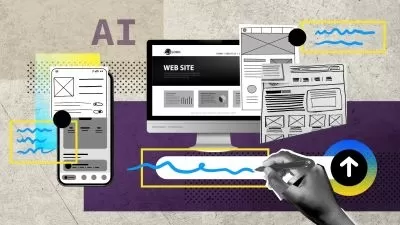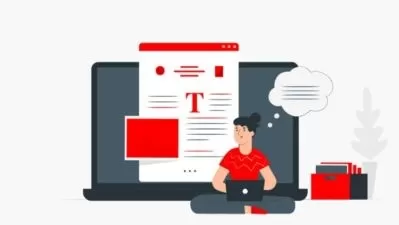About User Experience DesignLearn More
UX or user experience design focuses on the overall experience of the end user and considers elements such as perception, emotions and mental reactions in order to create the most optimal product, system or service possible. User experience design also has its own rules and criteria, among which we can mention "ease of use", "accessibility" and "comfort". Together, these factors can dramatically improve the experience that customers and users get.
Sort by:
Sorting
The newest
Most visited
Course time
Subtitle
Frequently asked questions about User Experience Design
User experience design is the perceived value of a product, depicted as a feedback loop where it passes between businesses and users. The product is typically developed into an app, service, or software system by companies, then tested for various use cases before it becomes accessible. On one side of the loop are users who decide whether each product is valuable. If it is, they are expected to take action on the product, such as using it to achieve a positive outcome. In return, this elevates the value of said product and transfers it back to the businesses creating and promoting them. Whenever businesses can save money or increase profits, they can keep investing in technologies to further improve their user experience by bringing something new to the table. User experience design encapsulates the process of making apps people can use easily, no matter what device they are on. This value blueprint combines the concept, design, and development factors that affect the user experience.
User experience (UX) designers or consultants are involved in developing digital products to ensure they have legitimate value by relying on the principles of usability, cognitive psychology, and visual design communication. UX designers are in charge of making usable prototypes of website and app interfaces received by the end-user. They work alongside UX researchers, interaction designers, and front-end developers to decide whether a product meets the visual requirements at every step of development and testing. Companies often adopt different tools and processes since there are multiple ways to approach UX design depending on the user’s interests. Some UX consultants find it helpful to think about design choices according to their technical feasibility and business viability. These insights allow them to create a user persona and formulate a model of what the final product might look like. This potential solution to user problems is then presented to a stakeholder for approval.
There are many tools available to UX designers. They will use surveying and video streaming tools like Typeform or SurveyMonkey to interview users about their preferences during the research and inspiration stage. For a brainstorming session, they might use a virtual whiteboard such as Miro to identify a common problem. They have software tools for prototyping and usability testing, such as InVision or Balsamiq. When building a wireframe, they need to understand how people navigate an app or a site. Once all the elements are in place, testing can begin as users are selected to complete tasks with tools like Optimizely or UsabilityHub. UX designers will observe users' satisfaction when interacting with the app. All the essential features will be written in code throughout the design phase. For project management, they might use Asana or Trello to keep track of goals and get in touch with their team.
This has been a long-debated question of UX design, especially when companies ask for designers to have coding experience. Although the ability to code gives them a leg up in their career, it’s far more important for them to be skilled at different types of user research. They must be able to communicate effectively with developers and product testers to address consumer pain points and suggest areas that need improvement. A UX designer is not required to know coding to succeed in their role, even if it would help them collaborate alongside the development process. The key takeaway is that UX design is all about bringing ideas for an app or website into reality. So on a visual level, the user interface is not only easy to navigate but also built using the right contextual framework.
As a User Experience designer, you will need to know many essential skills, starting with the design process: empathize, define, ideate, prototype, and test. Problem-solving is at the heart of UX design, where you’re in charge of conducting interviews, demographic studies, and competitor analysis. Subsequent steps involve brainstorming a user persona, storyboard, or scenario in the proper application environment. Additional skills include running usability tests, building interactive wireframes that combine dynamic design with cutting-edge technology, and creating a detailed plan that walks the user through how to use the app to complete the desired actions. For hard skills, you should be well-acquainted with modern design tools like Adobe XD, Figma, or even Webflow. Above all, you are expected to learn about the fundamentals of UX design and how to implement them into your future projects on the web.









